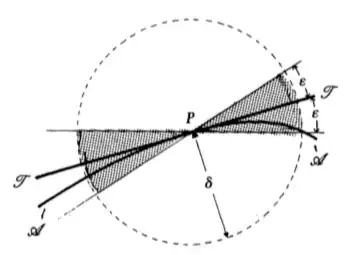Calculus books often give the "secant through two points coming closer together" description to give some intuition for tangent lines. They then say that the tangent line is what the curve "looks like" at that point, or that it's the "best approximation" to the curve at that point, and just take it for granted that (1) it's obvious what that means, and (2) that it's visually obvious that such statements are true.
To be fair, it's true that (1) I can sort of see what they mean, and (2) yes, I do have some visual intuition that something like that is correct. But I can't put into words what exactly a tangent line is, all I have is either the formal definition or this unsatisfying vague sense that a tangent "just touches the curve".
Is there a purely geometrical definition of a tangent line to a curve? Something without coordinates or functions, like an ancient Greek might have stated it. As an example, "A line that passes through the curve but does not cut it" is exactly the kind of thing I want, but of course it doesn't work for all curves at all points.

